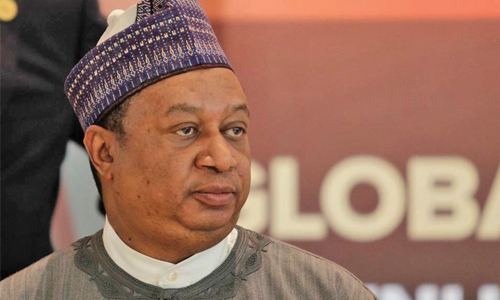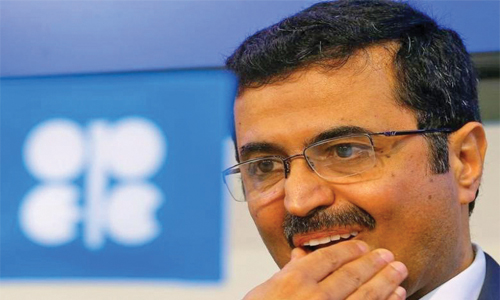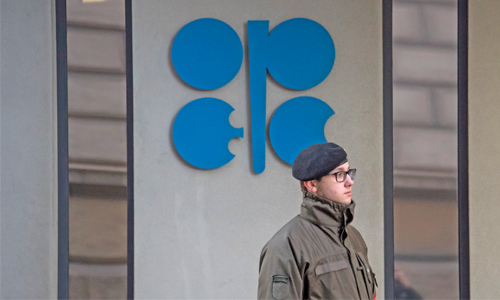OPEC seeks cuts from non-members at Vienna talks
Vienna : OPEC officials met yesterday with Russia and other oil producers to try to persuade them to lower production under a pact to stem a global glut and lift prices.
The talks, taking place at the oil cartel’s headquarters in Vienna, aim to nail down details on an accord reached late last month.
The Organisation of the Petroleum Exporting Countries (OPEC) agreed on November 30 to lower its monthly output by 1.2 million barrels per day (bpd) to 32.5 million bpd from January.
Under the deal, OPEC also wants oil-producing nations outside the group to lower their output by 600,000 barrels a day.
Arriving shortly before the start of the one-day talks, cartel chief Mohammed Barkindo of Nigeria spoke positively about reaching an agreement to cut output by 600,000 bpd “and even more”.
“This is a very historic meeting due to the presence of OPEC and non-OPEC members,” he said.
“The political atmosphere has changed.”
Moscow -- the world’s largest oil producer along with OPEC kingpin Saudi Arabia -- has already signalled it would provide half of that production cut in the first half of 2017.
Speaking to reporters, Russian Energy Minister Alexander Novak said Moscow would fulfil its commitment.
“We have stated our obligations and will abide by the figures we have talked about,” he was quoted as saying by Russia’s Interfax news agency.
Deal expected
Qatari Energy Minister Mohamed al-Sada, whose country currently holds the OPEC rotating presidency, described Saturday’s meeting as “vital for all producing countries, industry and the world economy.”
Oil prices climbed Friday as hopes grew of a deal. In late European business, West Texas Intermediate (WTI) crude stood at $51.44, 60 cents up on the day, while Brent rose 20 cents to $54.09. I
Of the 14 invited countries, 10 are expected to attend Saturday, according to the Bloomberg news agency.
Some analysts were optimistic that details of the deal would be finalised.
“We expect the meeting between OPEC and non-OPEC producers to result in a credible document, which we think will be supportive for prices,” said Bjarne Schieldrop, chief commodities analyst at top Nordic corporate bank SEB.
The November agreement ended weeks of uncertainty and volatility on crude markets, pushing prices above $50 for the first time in a month.
It also represented a dramatic reversal from OPEC’s Saudi-led game plan, introduced in 2014, of flooding the market to force out rivals, in particular US shale oil producers.
The strategy saw production outstrip demand, causing prices to plunge from more than $100 a barrel in June 2014 to near 13-year lows below $30 earlier this year.
Little immediate reduction
OPEC now seeks a global cut of 1.8 million barrels a day to help rebalance the market.
The group -- which produces around 40 per cent of the world’s crude -- needs non-OPEC members to join the cuts in order to drain current stockpiles.
But Bloomberg calculations, based on OPEC data, indicated there would be little overall reduction in record oil inventories in 2017 -- even if OPEC can convince non-members to come onboard.
“Non-OPEC producers, such as Mexico, Azerbaijan and Colombia, are likely to dress up involuntary production declines, already factored in by traders, as cuts,” according to
Bloomberg.
In addition, Mexico and Kazakhstan plan to ramp up their crude production next year.
Russia announced Wednesday that national oil companies backed cuts of 300,000 bpd but news agencies quoted Lukoil chief executive Vagit Alekperov as saying “No decision was made.”
The slide in oil prices and Western sanctions over Moscow’s role in the Ukraine crisis have pummelled the Russian economy.
“For now we are not assuming that Russia will deliver on the promised cuts but we are ready to change this assumption if we see lower exports coming out of Russia,” said DNB Markets on Friday.
Related Posts



